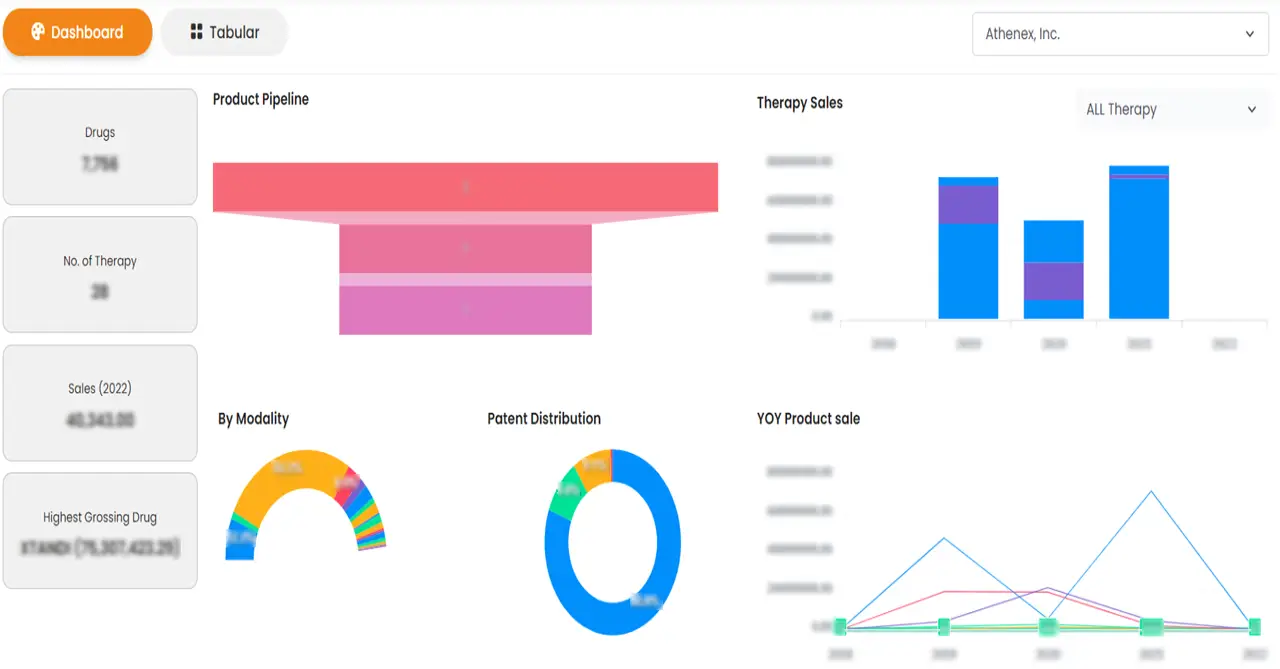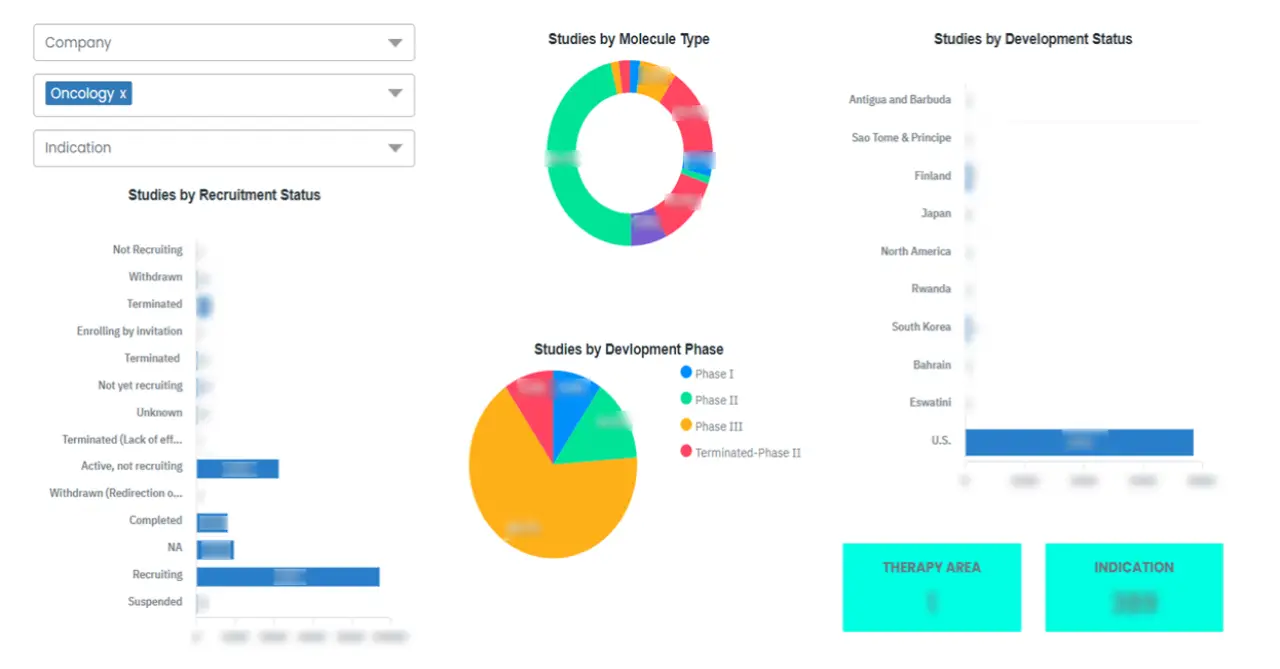Global Neuromyelitis Optica Treatment Market
시장 규모 (USD 10억)
연평균 성장률 :
% 
 USD
297.72 Million
USD
503.94 Million
2024
2032
USD
297.72 Million
USD
503.94 Million
2024
2032
| 2025 –2032 | |
| USD 297.72 Million | |
| USD 503.94 Million | |
|
|
|
>Global Neuromyelitis Optica Treatment Market Segmentation, By Types (Neuromyelitis Optica Spectrum Disorder with Aquaporin-4 Antibodies, and Neuromyelitis Optica Spectrum Disorder without Aquaporin-4 Antibodies), Treatment Type (Medication, Plasma Exchange Therapy, and Immunoglobulin Therapy), Drugs (C5 Protein Inhibitor, Oral Corticosteroid, Non-Steroid Immunosuppressive Drugs, and Others), Route of Administration(Oral and Injectable), End- Users (Hospitals, Homecare, Specialty Clinics, and Others) – Industry Trends and Forecast to 2032
Neuromyelitis Optica Treatment Market Analysis
The neuromyelitis optica treatment market is gaining traction due to the rising prevalence of neuromyelitis optica spectrum disorder and advancements in therapeutic options. Neuromyelitis optica spectrum disorder is a rare autoimmune condition characterized by severe inflammation of the optic nerves and spinal cord, leading to vision loss and disability. Recent developments in the market have focused on targeted therapies that specifically address the underlying pathophysiology of the disease, including monoclonal antibodies that inhibit key proteins involved in the inflammatory process. The growing awareness of neuromyelitis optica spectrum disorder among healthcare professionals and patients is driving the demand for effective treatment options. Additionally, ongoing clinical trials and research are expanding the pipeline of potential therapies, which is expected to enhance patient outcomes. As the understanding of the condition evolves, the market is poised for significant growth, presenting opportunities for pharmaceutical companies and healthcare providers to develop innovative solutions tailored to the needs of affected individuals.
Neuromyelitis Optica Treatment Market Size
The global neuromyelitis optica treatment market size was valued at USD 297.72 million in 2024 and is projected to reach USD 503.94 million by 2032, with a CAGR of 6.80% during the forecast period of 2025 to 2032. In addition to the insights on market scenarios such as market value, growth rate, segmentation, geographical coverage, and major players, the market reports curated by the Data Bridge Market Research also include depth expert analysis, patient epidemiology, pipeline analysis, pricing analysis, and regulatory framework.
Neuromyelitis Optica Treatment Market Trends
“Development of Targeted Therapies”
The neuromyelitis optica treatment market is evolving rapidly, driven by innovations in therapeutic approaches and increased research efforts. A notable trend is the development of targeted therapies, particularly monoclonal antibodies, designed to specifically inhibit inflammatory processes associated with neuromyelitis optica spectrum disorder. These advancements are enhancing the efficacy and safety of treatments, offering hope for better patient outcomes. Furthermore, the integration of precision medicine is gaining traction, allowing for personalized treatment plans based on individual patient profiles. As awareness of the disorder grows and more clinical trials are initiated, the market is expected to witness substantial growth, reflecting a commitment to improving the quality of care for those affected by this debilitating condition.
Report Scope and Neuromyelitis Optica Treatment Market Segmentation
|
Attributes |
Neuromyelitis Optica Treatment Key Market Insights |
|
Segments Covered |
|
|
Countries Covered |
U.S., Canada and Mexico in North America, Germany, France, U.K., Netherlands, Switzerland, Belgium, Russia, Italy, Spain, Turkey, Rest of Europe in Europe, China, Japan, India, South Korea, Singapore, Malaysia, Australia, Thailand, Indonesia, Philippines, Rest of Asia-Pacific (APAC) in the Asia-Pacific (APAC), Saudi Arabia, U.A.E., South Africa, Egypt, Israel, Rest of Middle East and Africa (MEA) as a part of Middle East and Africa (MEA), Brazil, Argentina and Rest of South America as part of South America |
|
Key Market Players |
F. Hoffmann-La Roche Ltd (Switzerland), AstraZeneca (U.K.), Teva Pharmaceutical Industries Ltd. (Israel), Alexion Pharmaceuticals, Inc (U.S.), Viela Bio (U.S.), Anvil Biosciences (U.S.), Opexa Therapeutics, Inc (U.S.), Arrien Pharmaceuticals, LLC (U.S.), TG Therapeutics, Inc (U.S.), Bionure (Spain) |
|
Market Opportunities |
|
|
Value Added Data Infosets |
In addition to the insights on market scenarios such as market value, growth rate, segmentation, geographical coverage, and major players, the market reports curated by the Data Bridge Market Research also include depth expert analysis, patient epidemiology, pipeline analysis, pricing analysis, and regulatory framework. |
Neuromyelitis Optica Treatment Market Definition
Neuromyelitis optica treatment encompasses medical interventions aimed at managing neuromyelitis optica spectrum disorder, an autoimmune condition that causes inflammation of the optic nerves and spinal cord. Treatment typically includes immunosuppressive medications, monoclonal antibodies, corticosteroids, and plasma exchange therapy, focusing on reducing inflammation, alleviating symptoms, preventing relapses, and preserving neurological function to enhance patients' quality of life.
Neuromyelitis Optica Treatment Market Dynamics
Drivers
- Increasing Incidence of Neuromyelitis Optica
The increasing prevalence of neuromyelitis optica spectrum disorder is significantly contributing to the demand for effective treatment options, thereby driving market growth. As awareness of this rare autoimmune condition grows, more patients are being diagnosed and seeking medical interventions to manage their symptoms and improve their quality of life. This rising incidence necessitates the development and availability of targeted therapies and innovative treatment solutions. Healthcare providers are increasingly recognizing the importance of timely and effective management of the disorder, leading to an expanded market for therapeutic options. Consequently, pharmaceutical companies are motivated to invest in research and development to meet the escalating needs of patients, further propelling market growth.
- Rising Research and Clinical Trials
Ongoing clinical trials and research initiatives are crucial in expanding the pipeline of potential therapies for neuromyelitis optica spectrum disorder, thereby driving interest in the treatment market. These efforts are focused on developing innovative and targeted therapies that address the unique challenges of the condition, which can significantly improve treatment outcomes for patients. As new therapies emerge from clinical trials, they offer promising alternatives to traditional treatment options, enhancing the overall efficacy and safety of management strategies. Additionally, the increasing investment in research underscores the commitment of pharmaceutical companies and researchers to advance the understanding of neuromyelitis optica, fostering a dynamic environment that encourages the exploration of novel treatment approaches and further stimulating market growth.
Opportunities
- Rise of Telemedicine
The rise of telemedicine offers significant opportunities to enhance patient access to specialists and facilitate remote monitoring for individuals with neuromyelitis optica spectrum disorder. By leveraging telehealth platforms, patients can easily consult with neurologists and other healthcare professionals from the comfort of their homes, eliminating barriers related to travel and scheduling. This increased accessibility allows for timely interventions and regular follow-ups, which are crucial for managing the condition effectively. Additionally, remote monitoring technologies enable healthcare providers to track patients' health data in real-time, facilitating personalized treatment adjustments and proactive management of symptoms. As a result, the integration of telemedicine in neuromyelitis optica care improves patient outcomes and expands the market potential for innovative healthcare solutions.
- Development of New and Innovative Therapies
There is a substantial opportunity for the development of new and innovative therapies, such as monoclonal antibodies and small molecules, that specifically target the underlying mechanisms of neuromyelitis optica spectrum disorder. These advanced therapies can offer more effective treatment options by addressing the root causes of the disease, potentially improving patient outcomes significantly. The growing understanding of the pathophysiology of neuromyelitis optica paves the way for targeted interventions that can reduce disease activity and prevent relapses. Furthermore, as research continues to uncover novel therapeutic pathways, pharmaceutical companies are encouraged to invest in developing these promising treatments, thus expanding their market presence and catering to the evolving needs of patients. This innovation enhances treatment options and contributes to a more personalized approach to managing neuromyelitis optica.
Restraints/Challenges
- Competing Therapeutic Options
The presence of alternative treatments for autoimmune disorders poses a significant challenge for therapies targeting neuromyelitis optica spectrum disorder. Established treatments for other autoimmune conditions may overshadow neuromyelitis optica therapies, making it difficult for newer and potentially more effective treatments to gain market share. Physicians often prioritize familiar options that have a proven track record, leading to hesitance in adopting novel therapies for neuromyelitis optica. This competition can result in limited awareness of the benefits and unique mechanisms of action of neuromyelitis optica treatments, ultimately impacting patient access and reducing the incentive for pharmaceutical companies to invest in research and development in this area. Consequently, the market struggles to achieve its full potential despite the need for effective treatment options.
- High Cost of Treatments
The significant expenses associated with innovative therapies, such as monoclonal antibodies, present a considerable restraint in the neuromyelitis optica treatment market. These advanced therapies often come with high price tags, which can limit patient access, especially in regions with constrained healthcare budgets. Many healthcare providers may hesitate to prescribe these costly options due to concerns about patients' ability to afford them or lack of insurance coverage. This financial barrier affects treatment adherence and contributes to disparities in healthcare access, ultimately hindering the overall effectiveness of treatment strategies for neuromyelitis optica spectrum disorder. As a result, the high costs associated with innovative therapies remain a critical challenge for market growth and patient care.
This market report provides details of new recent developments, trade regulations, import-export analysis, production analysis, value chain optimization, market share, impact of domestic and localized market players, analyses opportunities in terms of emerging revenue pockets, changes in market regulations, strategic market growth analysis, market size, category market growths, application niches and dominance, product approvals, product launches, geographic expansions, technological innovations in the market. To gain more info on the market contact Data Bridge Market Research for an Analyst Brief, our team will help you take an informed market decision to achieve market growth.
Neuromyelitis Optica Treatment Market Scope
The market is segmented on the basis of treatment type, drugs, route of administration, and end-users. The growth amongst these segments will help you analyse meagre growth segments in the industries and provide the users with a valuable market overview and market insights to help them make strategic decisions for identifying core market applications.
Types
- Neuromyelitis Optica Spectrum Disorder with Aquaporin-4 Antibodies
- Neuromyelitis Optica Spectrum Disorder without Aquaporin-4 Antibodies
Treatment Type
- Medication
- Plasma Exchange Therapy
- Immunoglobulin Therapy
Drugs
- C5 Protein Inhibitor
- Oral Corticosteroid
- Non-Steroid Immunosuppressive Drugs
- Others
Route of Administration
- Oral
- Injectable
End-Users
- Hospitals
- Homecare
- Specialty Clinics
- Others
Neuromyelitis Optica Treatment Market Regional Analysis
The market is analysed and market size insights and trends are provided by country, treatment type, drugs, route of administration, and end-users as referenced above.
The countries covered in the market report are U.S., Canada and Mexico in North America, Germany, France, U.K., Netherlands, Switzerland, Belgium, Russia, Italy, Spain, Turkey, Rest of Europe in Europe, China, Japan, India, South Korea, Singapore, Malaysia, Australia, Thailand, Indonesia, Philippines, Rest of Asia-Pacific (APAC) in the Asia-Pacific (APAC), Saudi Arabia, U.A.E., South Africa, Egypt, Israel, Rest of Middle East and Africa (MEA) as a part of Middle East and Africa (MEA), Brazil, Argentina and Rest of South America as part of South America.
North America leads the neuromyelitis optica treatment market, primarily driven by heightened awareness regarding the importance of early diagnosis and treatment options. This growing recognition among healthcare professionals and patients alike has fostered an environment conducive to new product launches and advancements in therapeutic approaches. As a result, the region continues to establish itself as a key player in the development and accessibility of effective treatments for neuromyelitis optica spectrum disorder.
Asia-Pacific region is anticipated to experience significant growth from 2025 to 2032, largely due to the expanding patient population affected by neuromyelitis optica spectrum disorder. This increase in cases is prompting a greater demand for effective treatment options and healthcare services. As awareness and access to medical care improve, the region is poised to become a prominent market for neuromyelitis optica therapies.
The country section of the report also provides individual market impacting factors and changes in regulation in the market domestically that impacts the current and future trends of the market. Data points such as down-stream and upstream value chain analysis, technical trends and porter's five forces analysis, case studies are some of the pointers used to forecast the market scenario for individual countries. Also, the presence and availability of global brands and their challenges faced due to large or scarce competition from local and domestic brands, impact of domestic tariffs and trade routes are considered while providing forecast analysis of the country data.
Neuromyelitis Optica Treatment Market Share
The market competitive landscape provides details by competitor. Details included are company overview, company financials, revenue generated, market potential, investment in research and development, new market initiatives, global presence, production sites and facilities, production capacities, company strengths and weaknesses, product launch, product width and breadth, application dominance. The above data points provided are only related to the companies' focus related to market.
Neuromyelitis Optica Treatment Market Leaders Operating in the Market Are:
- F. Hoffmann-La Roche Ltd (Switzerland)
- AstraZeneca (U.K.)
- Teva Pharmaceutical Industries Ltd. (Israel)
- Alexion Pharmaceuticals, Inc (U.S.)
- Viela Bio (U.S.)
- Anvil Biosciences (U.S.)
- Opexa Therapeutics, Inc (U.S.)
- Arrien Pharmaceuticals, LLC (U.S.)
- TG Therapeutics, Inc (U.S.)
- Bionure (Spain)
Latest Developments in Neuromyelitis Optica Treatment Market
- In March 2024, AstraZeneca's Ultomiris (ravulizumab-cwvz) has received approval from the US Food and Drug Administration (FDA) for the treatment of neuromyelitis optica spectrum disorder, a rare autoimmune condition affecting an estimated 6,000 adults in the United States. This approval marks a significant advancement in therapeutic options for patients living with this challenging disease. By providing a targeted treatment for NMOSD, AstraZeneca aims to improve patient outcomes and quality of life in this underserved population.
- In March 2024, AstraZeneca's Alexion announced that it has gained approval for the fourth indication of Ultomiris, allowing it to be utilized in the treatment of neuromyelitis optica spectrum disorder, a rare autoimmune condition. This milestone underscores the growing versatility of Ultomiris in addressing various severe autoimmune diseases. With this new indication, AstraZeneca aims to enhance treatment options for patients suffering from this challenging disorder, improving their chances for better health outcomes.
- In October 2023, Amgen revealed new findings from the phase 3 N-MOmentum clinical trial, which provide valuable insights into the presence of inflammatory biomarkers associated with neuromyelitis optica spectrum disorder (NMOSD). These findings further reinforce the "durable impact" of Uplizna (inebilizumab) in minimizing disease-related attacks. The study highlights the potential of Uplizna as an effective treatment option, emphasizing its role in managing the condition and improving patient outcomes by targeting the underlying inflammatory processes associated with NMOSD.
SKU-
세계 최초의 시장 정보 클라우드 보고서에 온라인으로 접속하세요
- 대화형 데이터 분석 대시보드
- 높은 성장 잠재력 기회를 위한 회사 분석 대시보드
- 사용자 정의 및 질의를 위한 리서치 분석가 액세스
- 대화형 대시보드를 통한 경쟁자 분석
- 최신 뉴스, 업데이트 및 추세 분석
- 포괄적인 경쟁자 추적을 위한 벤치마크 분석의 힘 활용
연구 방법론
데이터 수집 및 기준 연도 분석은 대규모 샘플 크기의 데이터 수집 모듈을 사용하여 수행됩니다. 이 단계에는 다양한 소스와 전략을 통해 시장 정보 또는 관련 데이터를 얻는 것이 포함됩니다. 여기에는 과거에 수집한 모든 데이터를 미리 검토하고 계획하는 것이 포함됩니다. 또한 다양한 정보 소스에서 발견되는 정보 불일치를 검토하는 것도 포함됩니다. 시장 데이터는 시장 통계 및 일관된 모델을 사용하여 분석하고 추정합니다. 또한 시장 점유율 분석 및 주요 추세 분석은 시장 보고서의 주요 성공 요인입니다. 자세한 내용은 분석가에게 전화를 요청하거나 문의 사항을 드롭하세요.
DBMR 연구팀에서 사용하는 주요 연구 방법론은 데이터 마이닝, 시장에 대한 데이터 변수의 영향 분석 및 주요(산업 전문가) 검증을 포함하는 데이터 삼각 측량입니다. 데이터 모델에는 공급업체 포지셔닝 그리드, 시장 타임라인 분석, 시장 개요 및 가이드, 회사 포지셔닝 그리드, 특허 분석, 가격 분석, 회사 시장 점유율 분석, 측정 기준, 글로벌 대 지역 및 공급업체 점유율 분석이 포함됩니다. 연구 방법론에 대해 자세히 알아보려면 문의를 통해 업계 전문가에게 문의하세요.
사용자 정의 가능
Data Bridge Market Research는 고급 형성 연구 분야의 선두 주자입니다. 저희는 기존 및 신규 고객에게 목표에 맞는 데이터와 분석을 제공하는 데 자부심을 느낍니다. 보고서는 추가 국가에 대한 시장 이해(국가 목록 요청), 임상 시험 결과 데이터, 문헌 검토, 재생 시장 및 제품 기반 분석을 포함하도록 사용자 정의할 수 있습니다. 기술 기반 분석에서 시장 포트폴리오 전략에 이르기까지 타겟 경쟁업체의 시장 분석을 분석할 수 있습니다. 귀하가 원하는 형식과 데이터 스타일로 필요한 만큼 많은 경쟁자를 추가할 수 있습니다. 저희 분석가 팀은 또한 원시 엑셀 파일 피벗 테이블(팩트북)로 데이터를 제공하거나 보고서에서 사용 가능한 데이터 세트에서 프레젠테이션을 만드는 데 도움을 줄 수 있습니다.















